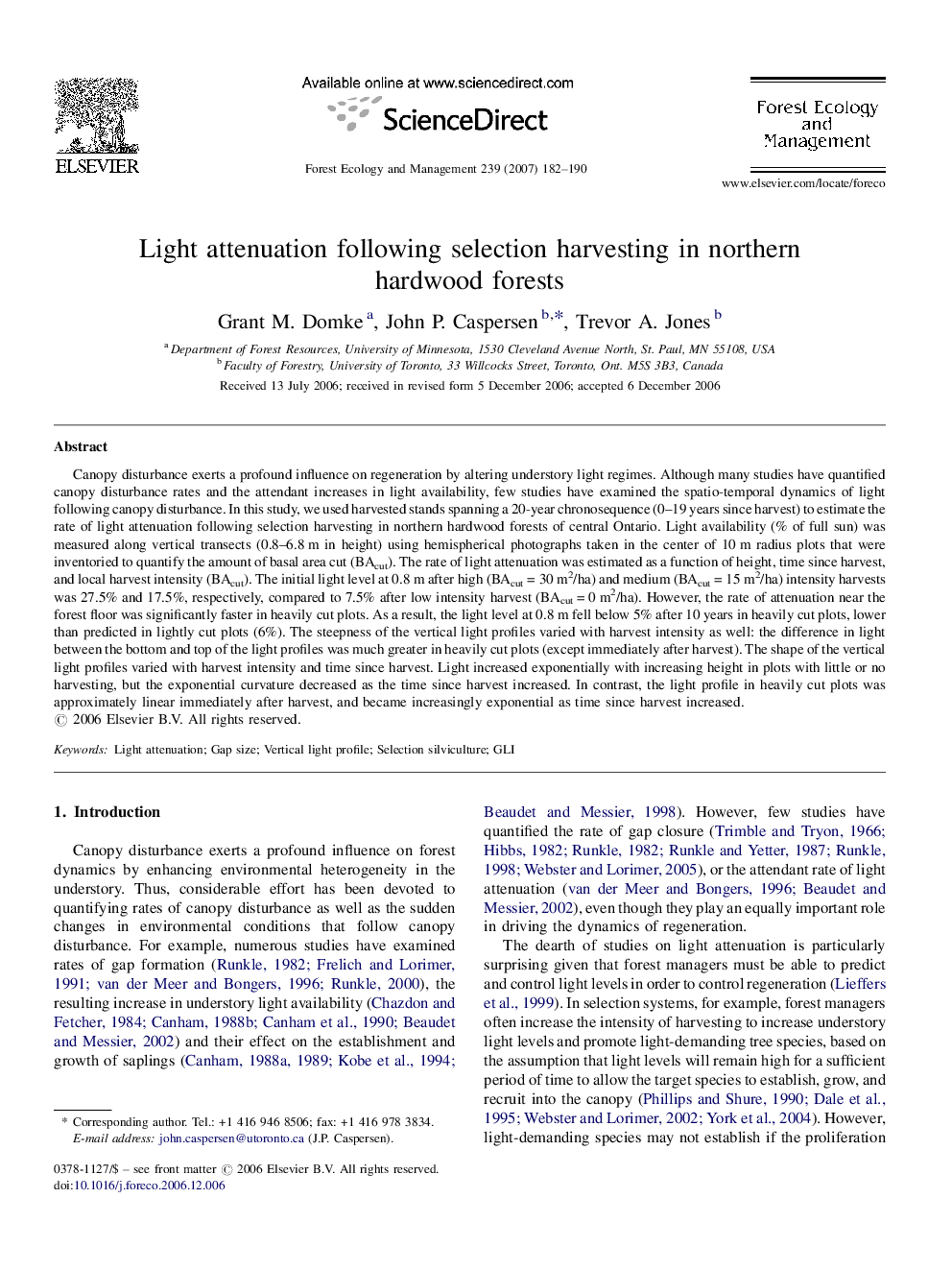| Article ID | Journal | Published Year | Pages | File Type |
|---|---|---|---|---|
| 89808 | Forest Ecology and Management | 2007 | 9 Pages |
Canopy disturbance exerts a profound influence on regeneration by altering understory light regimes. Although many studies have quantified canopy disturbance rates and the attendant increases in light availability, few studies have examined the spatio-temporal dynamics of light following canopy disturbance. In this study, we used harvested stands spanning a 20-year chronosequence (0–19 years since harvest) to estimate the rate of light attenuation following selection harvesting in northern hardwood forests of central Ontario. Light availability (% of full sun) was measured along vertical transects (0.8–6.8 m in height) using hemispherical photographs taken in the center of 10 m radius plots that were inventoried to quantify the amount of basal area cut (BAcut). The rate of light attenuation was estimated as a function of height, time since harvest, and local harvest intensity (BAcut). The initial light level at 0.8 m after high (BAcut = 30 m2/ha) and medium (BAcut = 15 m2/ha) intensity harvests was 27.5% and 17.5%, respectively, compared to 7.5% after low intensity harvest (BAcut = 0 m2/ha). However, the rate of attenuation near the forest floor was significantly faster in heavily cut plots. As a result, the light level at 0.8 m fell below 5% after 10 years in heavily cut plots, lower than predicted in lightly cut plots (6%). The steepness of the vertical light profiles varied with harvest intensity as well: the difference in light between the bottom and top of the light profiles was much greater in heavily cut plots (except immediately after harvest). The shape of the vertical light profiles varied with harvest intensity and time since harvest. Light increased exponentially with increasing height in plots with little or no harvesting, but the exponential curvature decreased as the time since harvest increased. In contrast, the light profile in heavily cut plots was approximately linear immediately after harvest, and became increasingly exponential as time since harvest increased.
